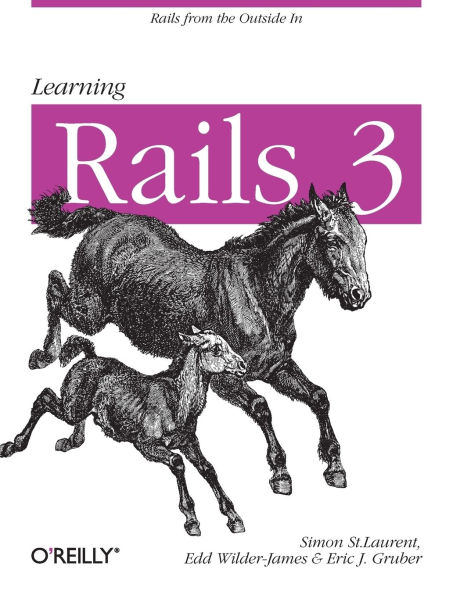Rather than throw you into the middle of the framework’s Model-View-Controller architecture, Learning Rails 3 works from the outside in. You’ll begin with the foundations of the Web you already know, and learn how to create something visible with Rails’ view layer. Then you’ll tackle the more difficult inner layers: the database models and controller code.
All you need to get started is HTML experience. Each chapter includes exercises and review questions to test your understanding as you go.
- Present content by building an application with a basic view and a simple controller
- Build forms and process their results, progressing from simple to more complex
- Connect forms to models by setting up a database, and create code that maps to database structures
- Use Rails scaffolding to build applications from a view-centric perspective
- Add common web application elements such as sessions, cookies, and authentication
- Build applications that combine data from multiple tables
- Send and receive email messages from your applications
"Learning Rails 3 feels like a brisk pair programming session with professionals who know how to use Ruby on Rails to get things done, and get them done well."
-Alan Harris, author of Sinatra: Up and Running
Rather than throw you into the middle of the framework’s Model-View-Controller architecture, Learning Rails 3 works from the outside in. You’ll begin with the foundations of the Web you already know, and learn how to create something visible with Rails’ view layer. Then you’ll tackle the more difficult inner layers: the database models and controller code.
All you need to get started is HTML experience. Each chapter includes exercises and review questions to test your understanding as you go.
- Present content by building an application with a basic view and a simple controller
- Build forms and process their results, progressing from simple to more complex
- Connect forms to models by setting up a database, and create code that maps to database structures
- Use Rails scaffolding to build applications from a view-centric perspective
- Add common web application elements such as sessions, cookies, and authentication
- Build applications that combine data from multiple tables
- Send and receive email messages from your applications
"Learning Rails 3 feels like a brisk pair programming session with professionals who know how to use Ruby on Rails to get things done, and get them done well."
-Alan Harris, author of Sinatra: Up and Running

Learning Rails 3: Rails from the Outside In
416
Learning Rails 3: Rails from the Outside In
416Paperback

Product Details
| ISBN-13: | 9781449309336 |
|---|---|
| Publisher: | O'Reilly Media, Incorporated |
| Publication date: | 07/31/2012 |
| Pages: | 416 |
| Product dimensions: | 6.80(w) x 9.10(h) x 0.70(d) |
